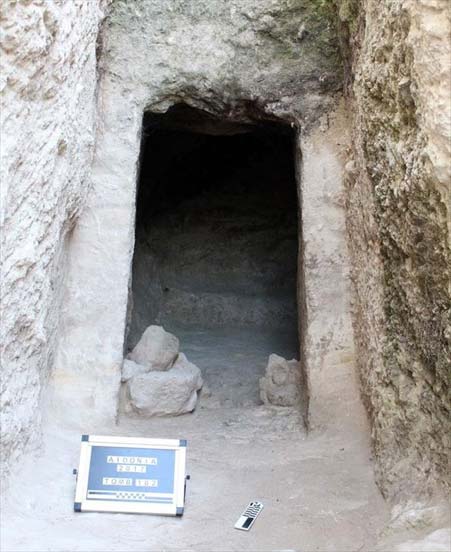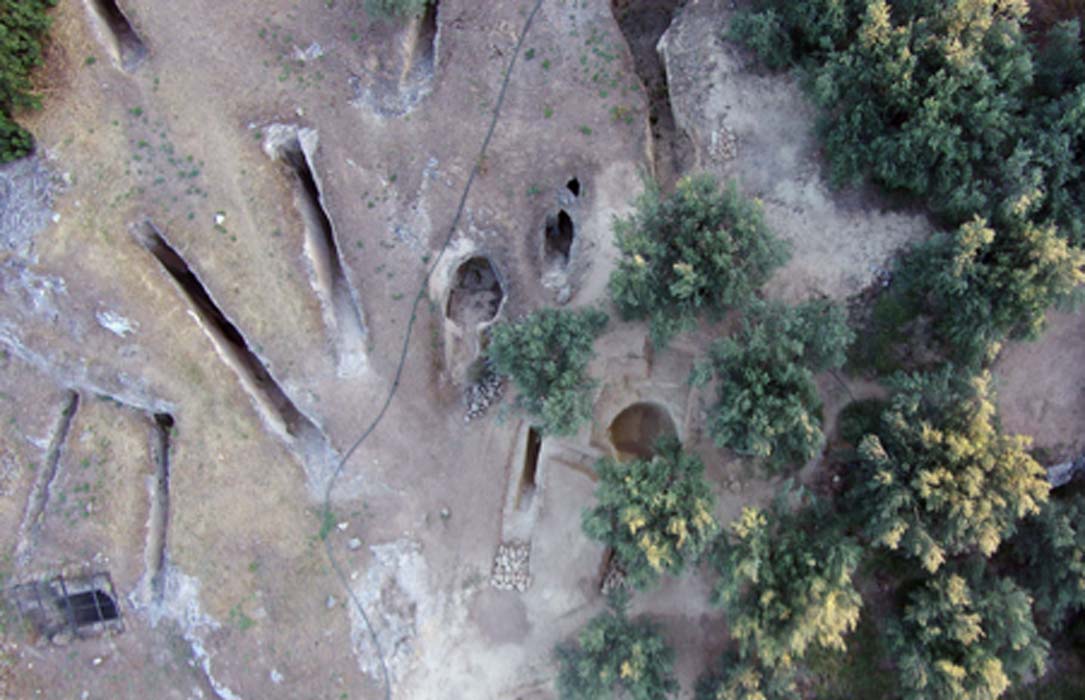Two Intact Chamber Tombs Dating Back 3,300 Years Unearthed in Greece
Two large chamber tombs dated to around 1300 BC have been found in an important Mycenaean-era burial ground in Greece. Previously discovered tombs in the area were extensively looted, but these two are completely intact, offering exciting new insights into the culture and period.
The Ministry of Culture in Greece announced that the find was made during a dig that was sponsored by the Corinthian Ephorate of Antiquities and led by Assistant Professor of Archaeology at the Universities of Graz in Austria and Trier of Germany, Konstantinos Kissa.
The tombs are located in the south of Greece, at Aidonia, not far from the modern town of Nemea, in the hilly terrain of the Peloponnese. They are also near the historic Nemea site, which is rich in archaeological ruins, including a famous temple of Zeus. Aidonia is also known for its cluster of ancient tombs, but most of them had been raided in the 1970s.

One of the previously discovered chamber tombs at Aidonia in Greece. Credit: Ministry of Culture and Sports
Mycenaean Cemetery
According to Kathimerini. gr, the tombs are at the eastern section of the Mycenaean cemetery. The Mycenaeans were a Late Bronze Age civilization that were very influential on the culture of Classical Greece. This culture was famed for its palaces and its aristocratic warrior-culture. This period is often associated with the Homeric epic poems, the Iliad and the Odyssey.
The tombs are believed to date ‘’from 1400 to 1200 BC’’, from the Late Mycenaean period according to Greece News. The first tomb found was roofed and contained two burials where the bones of 14 people were unearthed.
These are secondary burials as the ‘’remains had been transferred from other tombs’’ reports Global News. The second tomb’s roof had collapsed but three burials were found at the site.

A burial found in a chamber at Aidonia. Credit: Ministry of Culture and Sports
3000-Year-Old Grave Goods
Both the chamber tombs had burial goods that are over 3000 years old. Archaeologists found a number of clay utensils, some figurines and smaller objects, including buttons. In the tomb whose roof had not collapsed, archaeologists found some ‘’pots, false amphoras and narrow-leaved basins’’ reports Kathimerini. gr. These were probably offerings to the dead, a common practice at the time.
The two recently discovered tombs are from the high-point of the Bronze-Age culture when the Mycenaeans were building monumental palaces such as those found at Mycenae. According to the Pressroom, the finds made in the two tombs are being compared with those found at burial sites of the early Mycenaean period (ca. 1,600 - 1,400 BC), which were excavated in previous years at Adidonia. The cemetery contains a number of tombs that date from 1700-1100 BC and is not far from a major Mycenaean settlement.

Ancient Greek clay pots. Source: Ephorate of Antiquities of Corinth
Grave Robbers
What makes the discovery of the two tombs so remarkable is that they are intact, unlike the other burials in the cemetery. The other Mycenaean tombs had “been extensively looted, probably in 1976-77’’ according to Global News. These robberies led to a number of digs that were carried out by the Greek Archaeological Service. Archaeologists led by Kalliopi Crystal-Votsi and Constantina Kaza made a number of important discoveries in the late 1970s and early 1980s.
In total, some 20 chamber tombs were unearthed. Despite being previously looted, the burials still yielded a ‘’a stunning array of jewelery’’ according to the Pressroom. Among the other items found were weapons, storage vessels, and even tableware. Some of the golden objects that had been previously looted from these tombs were recovered by the Greek government. They came to light after an attempt to auction them in New York in the 1990s.

Newly-discovered chamber tomb with fallen roof and two pits. Source: Ephorate of Antiquities of Corinth
The newly discovered tombs can help us to understand the development of the site and the region in the Mycenaean period. The nature of the tombs can be contrasted with earlier examples. More importantly, the burial goods and their design can tell us much about the material culture of the civilization.
There are plans to excavate the site further as more burials may come to light.
Top image: Aerial view of chamber of the two tombs in the eastern part of the Mycenaean cemetery at Aidonia, along with the tombs from the old excavation. Source: Ephorate of Antiquities of Corinth
By Ed Whelan

















